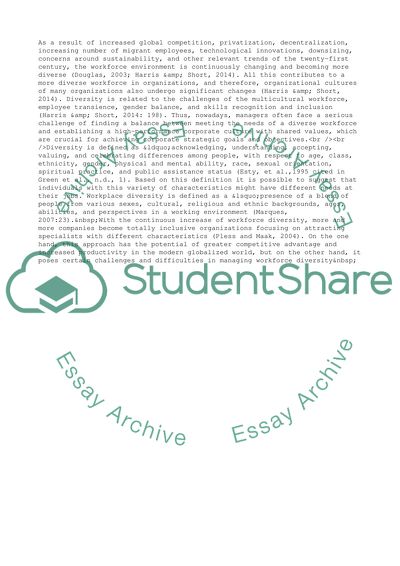Cite this document
(How Can Organizations Strikes a Balance between Respecting the Needs Coursework Example | Topics and Well Written Essays - 1750 words, n.d.)
How Can Organizations Strikes a Balance between Respecting the Needs Coursework Example | Topics and Well Written Essays - 1750 words. https://studentshare.org/management/1842844-how-can-orgnisations-strke-a-balance-betwee-respecting-and-meeting-the-needs-of-a-diverse-workforce-and-shaping-a-high-performance-corporate-culture-where-shared-values-contribute-to-the-accomplishment-of-strategic-goals
How Can Organizations Strikes a Balance between Respecting the Needs Coursework Example | Topics and Well Written Essays - 1750 words. https://studentshare.org/management/1842844-how-can-orgnisations-strke-a-balance-betwee-respecting-and-meeting-the-needs-of-a-diverse-workforce-and-shaping-a-high-performance-corporate-culture-where-shared-values-contribute-to-the-accomplishment-of-strategic-goals
(How Can Organizations Strikes a Balance Between Respecting the Needs Coursework Example | Topics and Well Written Essays - 1750 Words)
How Can Organizations Strikes a Balance Between Respecting the Needs Coursework Example | Topics and Well Written Essays - 1750 Words. https://studentshare.org/management/1842844-how-can-orgnisations-strke-a-balance-betwee-respecting-and-meeting-the-needs-of-a-diverse-workforce-and-shaping-a-high-performance-corporate-culture-where-shared-values-contribute-to-the-accomplishment-of-strategic-goals.
How Can Organizations Strikes a Balance Between Respecting the Needs Coursework Example | Topics and Well Written Essays - 1750 Words. https://studentshare.org/management/1842844-how-can-orgnisations-strke-a-balance-betwee-respecting-and-meeting-the-needs-of-a-diverse-workforce-and-shaping-a-high-performance-corporate-culture-where-shared-values-contribute-to-the-accomplishment-of-strategic-goals.
“How Can Organizations Strikes a Balance Between Respecting the Needs Coursework Example | Topics and Well Written Essays - 1750 Words”. https://studentshare.org/management/1842844-how-can-orgnisations-strke-a-balance-betwee-respecting-and-meeting-the-needs-of-a-diverse-workforce-and-shaping-a-high-performance-corporate-culture-where-shared-values-contribute-to-the-accomplishment-of-strategic-goals.


